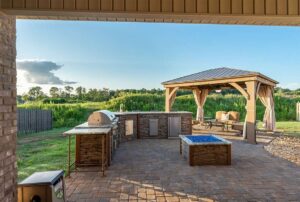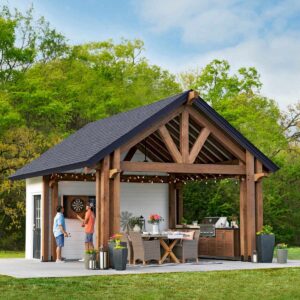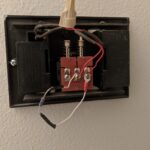Best 6 diy backyard pavilion pro ideas. Creating a DIY backyard pavilion can transform your outdoor space into a beautiful, functional area for relaxation and entertainment. Here are six professional ideas for DIY backyard pavilions, complete with detailed instructions.
1. Rustic Wooden Pavilion
Materials:
- Pressure-treated lumber
- Concrete for footings
- Metal brackets
- Roofing material (e.g., shingles or metal roofing)
- Stain or paint

Instructions:
- Planning and Design: Measure the area where you want to build your pavilion. Design the structure, considering the height, width, and length. Sketch your design.
- Setting the Posts: Dig post holes about 2-3 feet deep at the corners of your pavilion. Pour concrete into the holes and set the posts in place, ensuring they are level.
- Building the Frame: Attach beams to the posts using metal brackets. Use additional lumber to create a strong, supportive frame.
- Roof Structure: Add rafters to the frame, ensuring they are evenly spaced. Cover the rafters with plywood sheathing.
- Roofing: Install your chosen roofing material. Shingles offer a traditional look, while metal roofing can provide a modern, durable finish.
- Finishing Touches: Sand the wood, then apply stain or paint to protect against the elements. Add decorative elements like hanging lights or plants to personalize your pavilion.
2. Modern Steel Pavilion
Materials:
- Steel posts and beams
- Welded connections or bolts
- Polycarbonate roofing panels
- Rust-resistant paint
Instructions:
- Design and Measure: Plan your pavilion’s dimensions and layout. Steel allows for sleek, modern designs with minimalistic aesthetics.
- Foundation: Create a solid foundation by pouring concrete footings for the steel posts.
- Assembling the Frame: Weld or bolt the steel posts and beams together. Ensure all connections are secure and level.
- Roofing: Attach polycarbonate roofing panels to the steel frame. These panels are lightweight, durable, and provide UV protection.
- Painting: Apply rust-resistant paint to the steel to prevent corrosion and enhance the appearance.
- Customization: Add contemporary furniture and LED lighting for a stylish finish.
3. Traditional Timber Pavilion
Materials:
- Cedar or redwood lumber
- Mortise and tenon joinery
- Wooden dowels or pegs
- Shingle or metal roofing
Instructions:
- Design: Traditional timber pavilions often feature intricate woodwork. Design your pavilion with detailed plans for joinery.
- Preparing the Lumber: Cut the lumber to size, ensuring precision for the mortise and tenon joints.
- Assembling the Frame: Assemble the frame using mortise and tenon joinery, secured with wooden dowels or pegs.
- Roof Structure: Install rafters and cover with plywood sheathing.
- Roofing: Apply shingles or metal roofing, ensuring proper weatherproofing.
- Finishing: Sand the wood and apply a protective finish. Add traditional elements like wooden benches or swings.
4. Pergola Pavilion Hybrid
Materials:
- Pressure-treated lumber
- Concrete footings
- Pergola brackets
- Vines or climbing plants
Instructions:
- Design: A pergola pavilion hybrid combines the open feel of a pergola with the shelter of a pavilion. Design with an open roof structure and climbing plants.
- Setting Posts: Dig post holes and set posts in concrete footings.
- Frame Construction: Build the frame using pergola brackets for easy assembly.
- Roof Structure: Create an open rafter design, allowing space for plants to grow.
- Planting: Plant vines or climbing plants at the base of the posts. Over time, they will grow and create a natural canopy.
- Customization: Add outdoor furniture and soft lighting to create a cozy, shaded retreat.

5. A-Frame Pavilion
Materials:
- Pressure-treated lumber
- Concrete footings
- Metal brackets
- Shingle or metal roofing
Instructions:
- Design: A-frame pavilions have a distinctive peaked roof. Design with steep angles for a dramatic effect.
- Foundation: Set posts in concrete footings.
- Frame Construction: Build the A-frame structure with angled beams, securing with metal brackets.
- Roof Structure: Install additional support beams and rafters.
- Roofing: Apply shingles or metal roofing, ensuring proper overlap and weatherproofing.
- Finishing: Stain or paint the wood, and add features like a fire pit or outdoor kitchen.
6. Recycled Materials Pavilion
Materials:
- Recycled wood, metal, or plastic
- Concrete footings
- Roofing material
- Eco-friendly paint
Instructions:
- Design: Incorporate recycled materials into your design for an eco-friendly pavilion.
- Foundation: Set posts in concrete footings, using recycled wood or metal.
- Frame Construction: Build the frame with recycled materials, ensuring structural integrity.
- Roof Structure: Use recycled roofing materials, such as corrugated metal or reclaimed shingles.
- Painting: Apply eco-friendly paint to protect the structure and enhance appearance.
- Customization: Add sustainable features like solar lights or rainwater collection systems.
Conclusion
Building a DIY backyard pavilion can be a rewarding project, adding both beauty and functionality to your outdoor space. Whether you prefer a rustic wooden design, a modern steel structure, or a traditional timber pavilion, careful planning and execution will ensure a successful build. Customize your pavilion to reflect your style and needs, creating a perfect retreat right in your backyard.
Read Also.Troubleshooting and Fixing a Leaking Shower Handle
